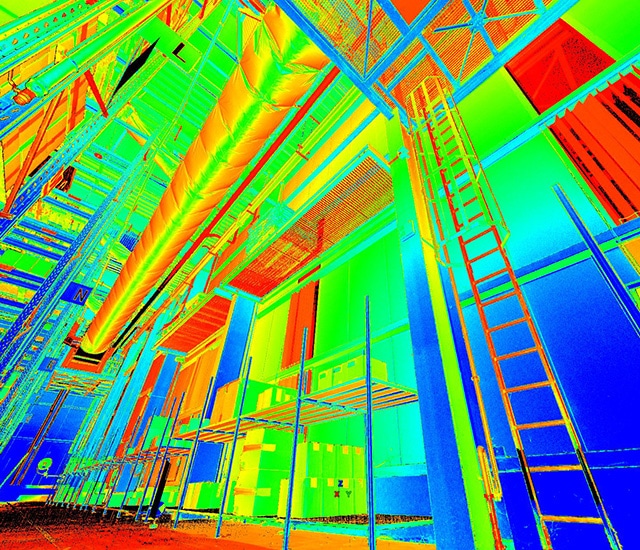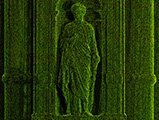Terrestrial LiDAR is used for 3D surveys of buildings, structures, objects and complex scenes for which traditional topometry and photogrammetry are not suitable. This contactless measurement technology which uses laser light as a data support, does away with the need to access dangerous zones, as well as allowing very fast, autonomous, high density inputs. The comprehensive information acquired means that there is no need to return to the field for complementary information.
It is possible to deliver different products to answer a wide range of requirements, using accurate, dense point clouds acquired with this technique.
Lasergrammetry is often combined with classical terrestrial or photogrammetric surveys.
As-built or as-scanned models delivered can be very attractive and extremely comprehensive.
Applications include:
- The field of architecture, cultural heritage sites and archeology:
- Site conservation and management,
- Indoor plans, walls and cross-sections,
- Framework or roofing plans,
- Layout and equipment,
- 3D models and BIM files (IFC), with photorealistic rendering.
- Industrial and scientific fields:
- Revamping and prototyping on production sites,
- Valve chamber and production facilities,
- Engine rooms,
- Scientific equipment and facilities,
- Complex or large sized mechanical parts…
- Civil engineering:
- 3D modeling of tunnels, viaducts, bridges,
- Roadwork and highway surveys,
- Confined spaces, galeries,
- Penstock pipe, water intake structures, dam,
- Dikes…
- Digitalization for digital models:
- 3D modeling of complex objects,
- Urban furniture,
- Built environment, structures and equipment…
Equipment
Thanks to its extensive resources, the company can deploy several teams in the field at once while being totally independent. Using terrestrial lidar ensures the safety of teams while protecting them from exposure to dangerous situations during the physical survey (rough terrain, highways, etc.)
In terms of terrestrial lidar equipment, we have several types of laser scanners that we use depending on their specific performances and the service required:
- Long-range scanner,
- Short-range high resolution scanner,
- Hand-held mobile scanner.
To deliver surveys with large lines or surfaces, we can organize mobile mapping solutions.

